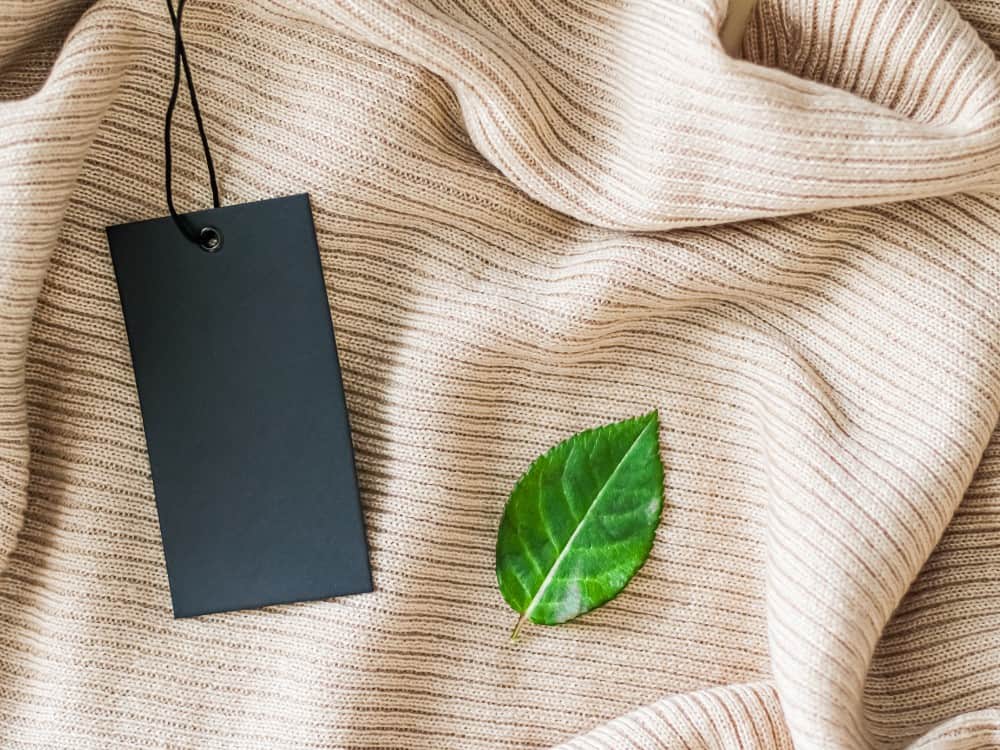
What Is Lyocell Fabric?: A Sustainable Fabric Tree-t
If you’ve been paying close attention to some of the labels on your favorite sustainable clothes, you’ve probably seen the name lyocell (or TENCEL™ lyocell)…a lot.
So, what is lyocell fabric?
While the full answer to “what kind of fabric is TENCEL™ lyocell?” is a little convoluted, the simple one is that it’s a more sustainable form of rayon fabric that provides exceptional comfort and softness—while also being relatively soft on the planet.
Finding sustainable fabrics in our increasingly unsustainable fabric-obsessed fast fashion culture, can feel like finding a needle in a haystack.
And with all of the unusual names and difficult-to-understand production processes, you’d be forgiven for putting it on the back-burner.
But if you’ve been wondering how that favorite pair of lyocell underwear was produced, if they’re sustainable, and how to care for them, we’ll help you get to the bottom of those lyocell bottoms.
The goal?
To answer the question: is lyocell a good fabric?
The Full List Of Lyocell Fabric Properties & Characteristics
1. What Is Lyocell Fabric?
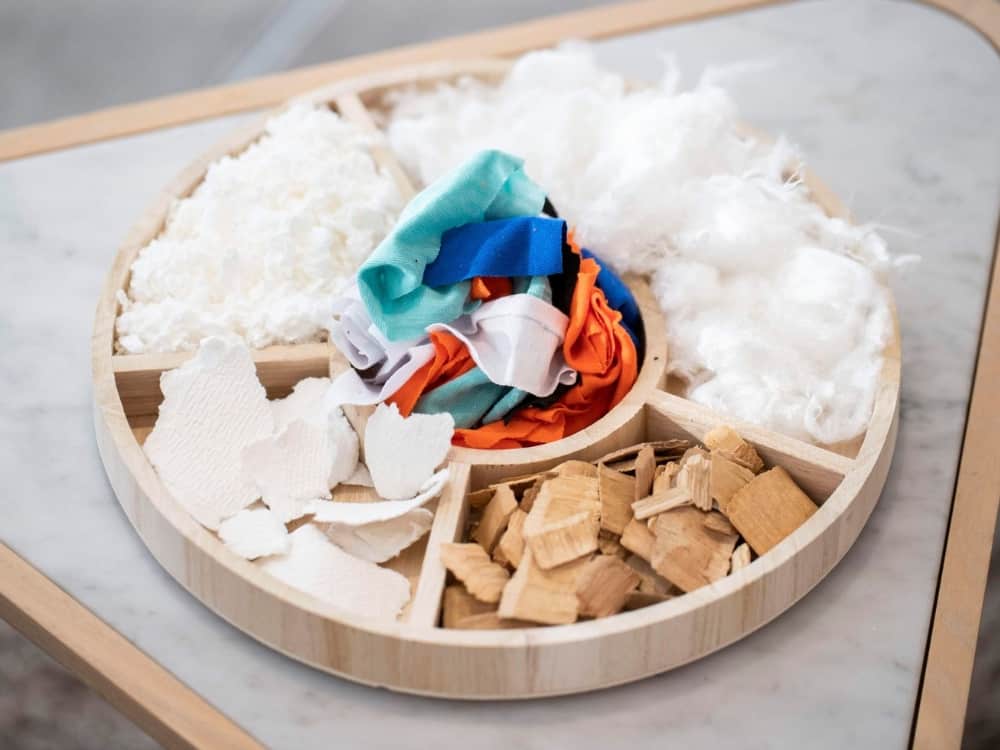
What Kind Of Fabric Is Lyocell?
What material is lyocell? Is lyocell a cotton or polyester?
In other words: is lyocell a natural fabric or a synthetic one?
The answer is neither!
Like modal, rayon, and viscose fabrics, it begins life as wood cellulose but is rendered into fabric via processing with a series of synthetic chemicals.
For that reason, it’s considered a semi-synthetic fabric or a processed cellulosic fiber.
However, because it is created from plant-based materials, it’s often lumped in with other natural fibers.
Lyocell was first developed in 1972 by American Enka.
It became more popular as time went on and now it’s considered to be a sustainable option for those who want to avoid fully synthetic fabrics like polyester or non-vegan fabrics like silk.
It’s breathable and moisture-wicking and thus lyocell is often used as a more delicate fabric in garments like ethical underwear, dresses, and dress shirts.
For its ability to replace less sustainable fibers, some companies have dubbed lyocell fabric as a “miracle fabric”.
What Is Lyocell Made Of?
Like many other fabrics, lyocell is made from plant cellulose.
Most commonly, lyocell is made from eucalyptus trees, though bamboo, oak, and birch trees are also used.
Because lyocell fibers are essentially wood, lyocell fabrics are naturally biodegradable. This is true of all semi-synthetic fiber and rayon-derived fabrics, though whether they can biodegrade safely depends on what exact chemicals they are processed with.
Here lyocell succeeds where many other cellulose fibres fail.
Not only is lyocell natural in origin, but it’s produced by dissolving wood pulp with an NMMO (N-Methylmorpholine N-oxide) solvent, which is far less toxic than traditional sodium hydroxide solvents.
This dissolves the wood pulp into a clear liquid which, when forced through tiny holes called spinarettes, turns into long, thin fibers.
Then it just needs to be washed, dried, carded (AKA separated), and cut.
2. What Is Lyocell Used For And Why?
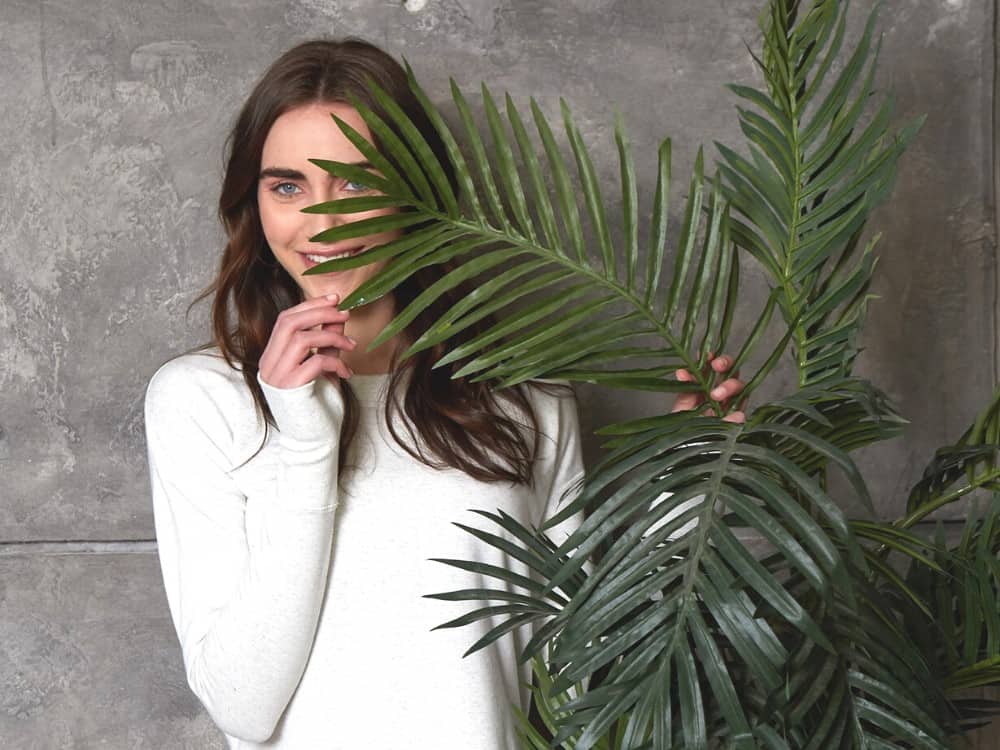
Lyocell fabric’s characteristics are rather unique and versatile, meaning it is found in a variety of things.
Commercially speaking, it’s a main component in conveyor belts, medical dressings and gowns, filtration cloths, specialty paper, and a wide variety of lining materials.
From an everyday consumer standpoint, however, lyocell mostly steps into the spotlight in clothing and sustainable bedding.
Some of our favorite sustainable t-shirts, activewear, undergarments, denim, dresses and more contain this soft and sustainable material.
What Does Lyocell Feel Like?
Lyocell is gaining traction as a fabric because its silky or buttery texture feels good on skin.
This means it’s both versatile and beautiful, while providing optimal comfort.
Its strength and elasticity make it a great long-lasting option, and well worth the generally higher price tags.
Is lyocell Stretchy?
Yes! Because of lyocell’s ability to wick moisture, provide breathability, and stay stretchy (even after years of use), it’s a often used as a sustainable alternative to synthetic substances in sustainable activewear and sustainable socks.
Is lyocell breathable or does lyocell make you sweat?
Being so breathable and thermoregulating, Lyocell doesn’t make you sweat.
It’s suitable for wear on even the hottest summer days or for those who perspire regularly—and it won’t leave you smelly thanks to naturally antibacterial properties.
That means it won’t need to be washed or replaced frequently, further saving water and other resources.
Lyocell is also superior at absorbing moisture, making it an excellent fabric choice for sustainable yoga clothes and those bikram yoga attendees or people who live in humid or rainy climates.
However, lyocell is NOT waterproof so it’s not a suitable fabric for garments intended to actually repel water (like sustainable rain jackets).
3. Is Lyocell Fabric Sustainable?
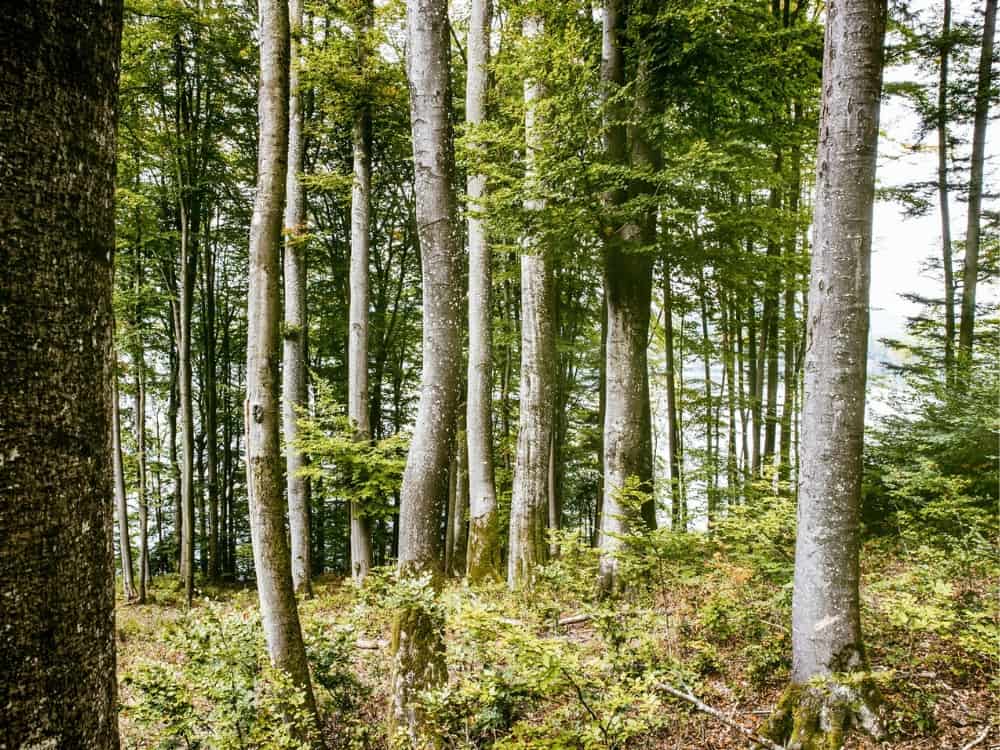
Let’s start with the good. Why is lyocell considered a sustainable fabric?
Well, anyone who knows anything about eucalyptus trees will know that they grow quickly. They also don’t require a lot of irrigation, don’t need any pesticides, and can be grown on land that isn’t useful for growing anything else.
In the case of TENCEL™ lyocell fabric, these trees are only sourced from FSC-certified sustainably managed forests, which provides safeguards against deforestation risks.
When it comes to the production process, extremely toxic chemicals and heavy metals aren’t required. Those that are, are usually reused in what’s referred to as a “closed-loop process” so they don’t get dumped into the environment.
The process to create lyocell uses much less water than other fabrics, too.
One of the biggest manufacturers of TENCEL™, Lenzing AG, can reuse up to 99.5% of the dissolving agents and water in an almost entirely zero waste system.
For this reason, this Austrian manufacturer responsible for the TENCEL™ brand of both lyocell and modal fabric is the most well-known and trusted. You might call them Lenzing OG because they’re the original sustainable lyocell pioneers.
Lenzing is also pioneering new REFIBRA™ technology. Any lyocell made with this technology will contain up to 50% post-consumer cotton waste by 2024.
They join other manufacturers like Simplifi Fabric in using certain earth-friendly sourcing and manufacturing practices that others don’t.
Like with anything labeled “sustainable” or “eco-friendly”, there are always risks of greenwashing.
If you’re a sustainable fashion advocate, do a little extra research to see where your favorite brands source their lyocell from and if they mention how it is processed. Lyocell may not be a transparent fabric but its manufacturing process should be.
However, if made right, all these factors—along with its high tensile strength, easy-to-dye properties, and durability when compared to similar types of rayon fabrics—are a recipe for a much more sustainable version of silk-like, drapey fabric.
4. Lyocell Fabric Advantages & Disadvantages
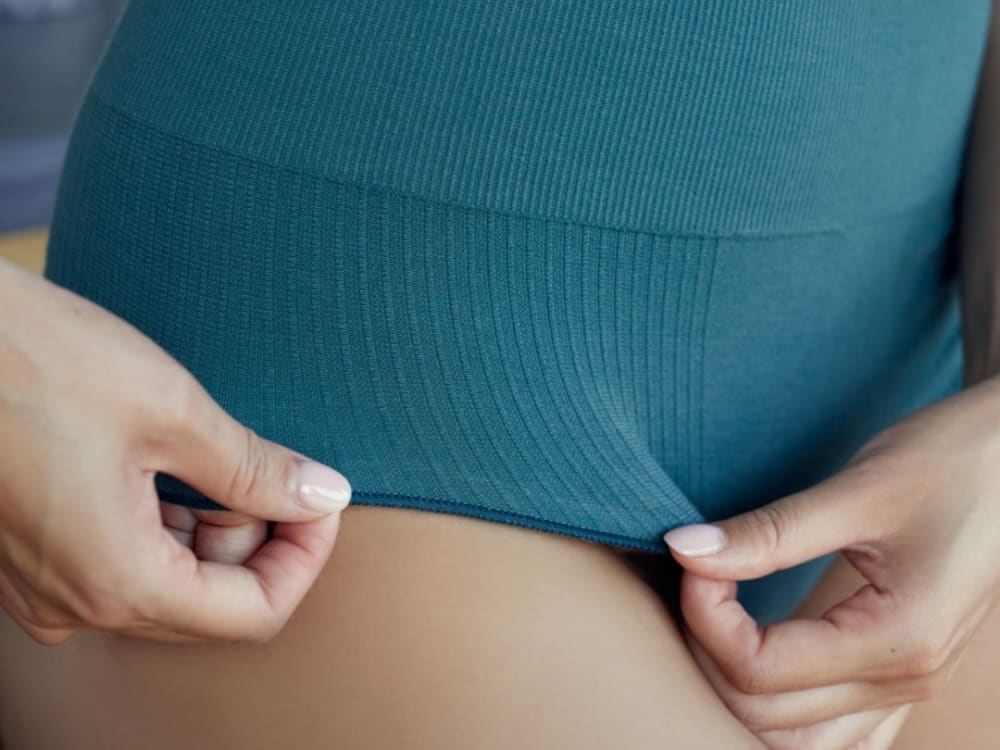
While this cellulose fiber is certainly considered to be one of the most sustainable fabrics out there, there are still both positive and negative aspects to the fabric itself as well as its manufacturing.
Advantages of Lyocell Fabric:
- Lyocell is considered sustainable because it is made from wood (in the case of TENCEL™ lyocell, from sustainable sources) and is, therefore, biodegradable and compostable.
- Certain lyocell fiber properties allow it to be blended with other fabrics like cotton, polyester, acrylic, ethical wool, and peace silk.
- It takes and holds dye easily, meaning less dye is needed to give it vivid colors.
- Lyocell is breathable and gentle on the skin with a soft, smooth texture. It’s also stretchy, efficient at absorbing moisture, temperature regulating, and antibacterial making it a favorable option for sustainable activewear.
- While it feels like a delicate fabric, it’s actually stronger than all other cellulosic fibres (especially its wet strength) as well as thermally stable and abrasion-resistant.
- Unlike viscose and other types of rayon, lyocell is made using a “closed loop” process which means that the chemicals used in the production process do not get released into the environment.
Disadvantages of Lyocell Fabric:
- While lyocell by itself is compostable, if blended with other synthetic fibers, the new fabric will not be compostable.
- Lyocell uses a lot of energy to produce and, depending on the manufacturer, is not always produced in an environmentally-friendly manner.
- Being wood pulp-based, lyocell can lead to deforestation if the manufacturing entity does not use sustainable sourcing methods.
- Lyocell fabric cost is still relatively high, but it’s getting more and more affordable as it becomes more mainstream.
In summary, lyocell feels amazing on even sensitive skin but might feel potentially problematic for the planet.
Let’s dig a little deeper into its eco-attributes to discover whether or not lyocell is eco-friendly.
5. How To Wash Lyocell Fabric
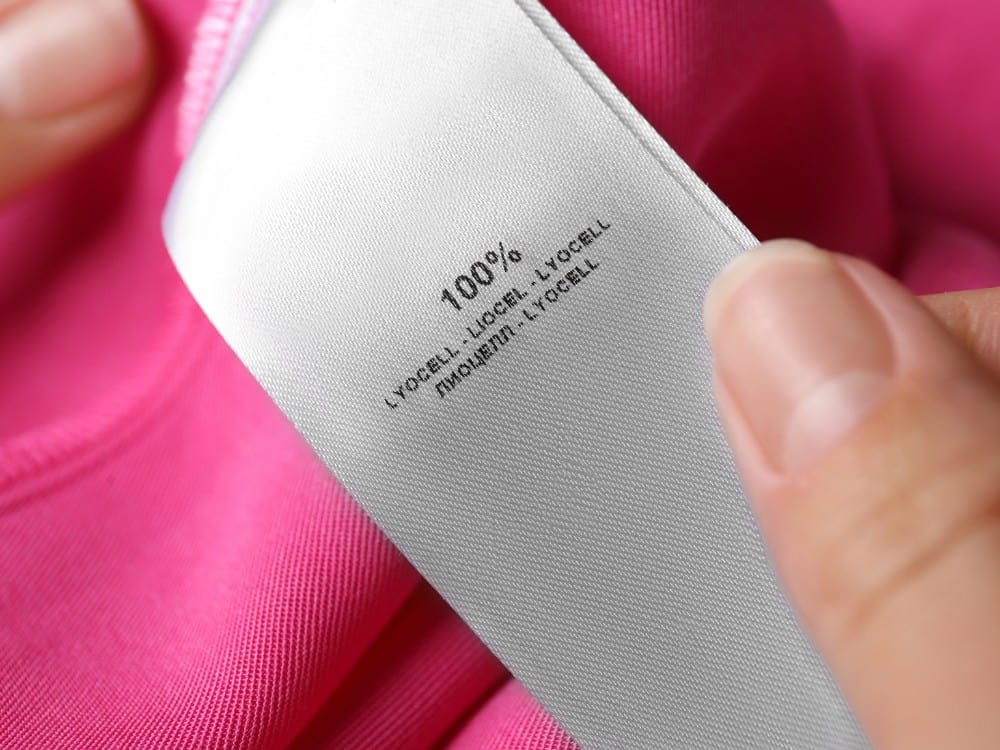
Like some of your other nicer-end fabrics, some extra care should be taken when caring for lyocell fabric.
Be sure to read the washing descriptions on the garment care label.
Does lyocell shrink?
Thanks to being thermally-stable, no, especially not when compared to cotton.
However, it should only be hand-washed in cold water or washed on the gentle cycle.
In fact, washing in cold water is generally a good rule of thumb, sustainably speaking, as cold water uses much less energy and better preserves the life of fabrics.
Use a gentle zero waste laundry detergent and hang dry rather than machine dry (which again, uses less energy AND greatly extends the life of your garment, lyocell or not).
Does lyocell wrinkle?
Lyocell is valued because it drapes nicely and doesn’t hold wrinkles well. That said, balling up your TENCEL™ in a packed drawer might still come out with a few wrinkles.
As for how to iron lyocell, the answer is to avoid it if you can.
If you absolutely must iron out a few wrinkles in your lyocell dress shirt, use a warm iron only. Try to avoid direct heat for longer than a second or two, as it may end up scorching the fabric.
Better yet, steam out the mild wrinkles by hanging it in your bathroom while you take a hot shower.
6. Lyocell Fabric Vs. Cotton & Other Fibers
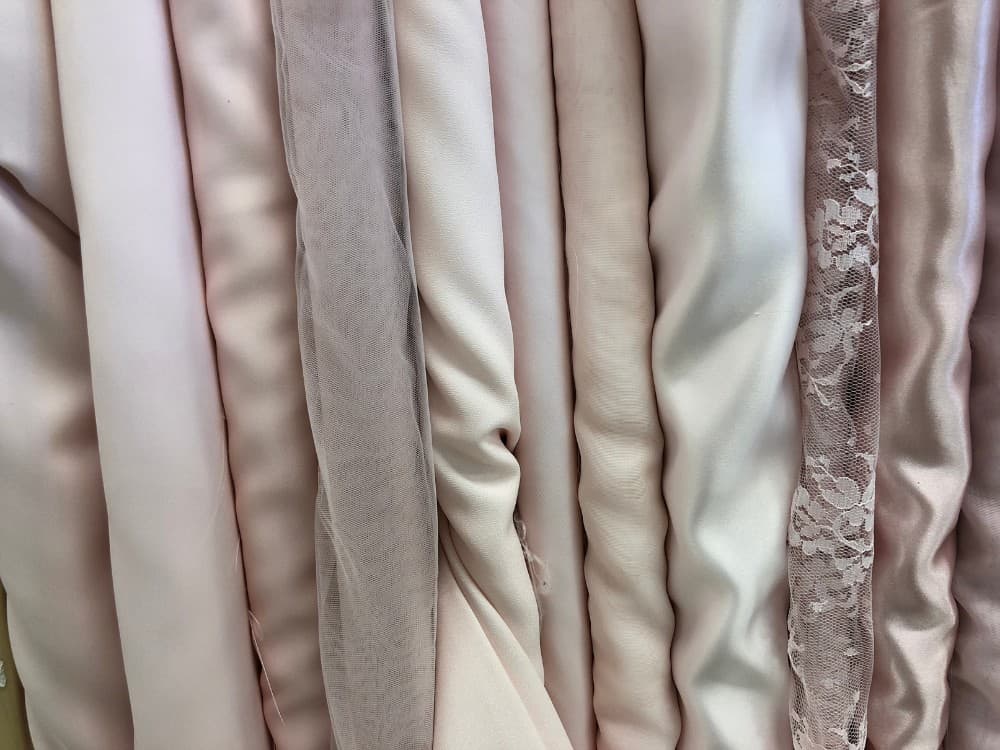
So how does Lyocell stack up against other fabrics?
In this section, we will delve into a comparative analysis of Lyocell against a variety of textiles, exploring their environmental impact, comfort, durability, and versatility, to help you make informed choices when it comes to your wardrobe and lifestyle. Whether you’re a fashion enthusiast, an eco-warrior, or simply curious about sustainable materials, this comparison will shed light on how Lyocell stands out in the world of fabrics.
What is the difference between lyocell and rayon?
Lyocell is technically a type of rayon fabric, considered to be the third generation of rayon.
Over time, many improvements have been made—meaning that lyocell is better at absorbing and releasing moisture, is more comfortable, and is more sustainable than rayon.
While rayon has a very weak tensile strength (especially when wet), lyocell’s is much stronger, leading to a more durable and long-lasting fabric.
What is the difference between lyocell and viscose?
Viscose is just another name for rayon, meaning it is another fabric made from plants, but instead of using a non-toxic solvent, the production of viscose requires sodium hydroxide.
This means to avoid some of the most severe environmental concerns associated with this type of fabric.
Lyocell is also superior on a practical level because, while their use is fairly similar, lyocell is generally more absorbent and breathable than viscose.
What is the difference between lyocell and TENCEL™
Nothing! Lyocell and TENCEL™ fabrics are one and the same, the latter simply referring to any lyocell manufactured by the Australian company Lenzing.
Fun fact Lyocell is also known as Newcell and Excel, too and is made by other suppliers, not just Lenzing.
What is the difference between lyocell and polyester?
The main difference between lyocell fabric and polyester (and nylon for that matter) is that polyester is made of fully synthetic fibers, and is synthesized from petrochemicals. Polyester may be cheaper, but it doesn’t feel as great and isn’t as eco-friendly.
It’s also not biodegradable as lyocell is.
Unlike polyester and other synthetic substances, lyocell will not result in microplastic pollution. This is a huge difference especially between lyocell and polyester fleece, which releases up to 1,900 plastic bits per wash!
Is lyocell the same as cotton?
While both lyocell and cotton come from plant-based fibers (and lyocell can actually be manufactured from cotton scraps), lyocell is NOT the same as cotton.
Cotton is a purely natural fabric, meaning the natural material is not chemically processed in order to render it into a weavable material.
Though it’s important to bear in mind this doesn’t mean toxic chemicals are not closely tied to cotton production. Cotton chemicals are present at the growth stage, whereas the raw materials behind lyocell fibers require no chemical inputs.
So is lyocell as good as cotton or is lyocell better than cotton?
While the rayon vs cotton debate is muddled by a host of different variables, replacing the variable of what type of rayon with lyocell gives a pretty definitive answer that it’s more sustainable than traditional cotton (one of the world’s thirstiest, dirtiest crops).
As far as comparing it to organic cotton (or even cork fabric), the two are fairly similar, but lyocell is still more absorbent than cotton. It’s also softer and nicer on the skin!
Sustainability-wise, there is an argument that it may pip even GOTS-certified organic cotton, depending on whether the certified “organic” cotton actually is organic.
Regardless, lyocell’s production is still more sustainable, requiring only half of the water cotton needs.
7. Which Brands Use Lyocell Fabric?
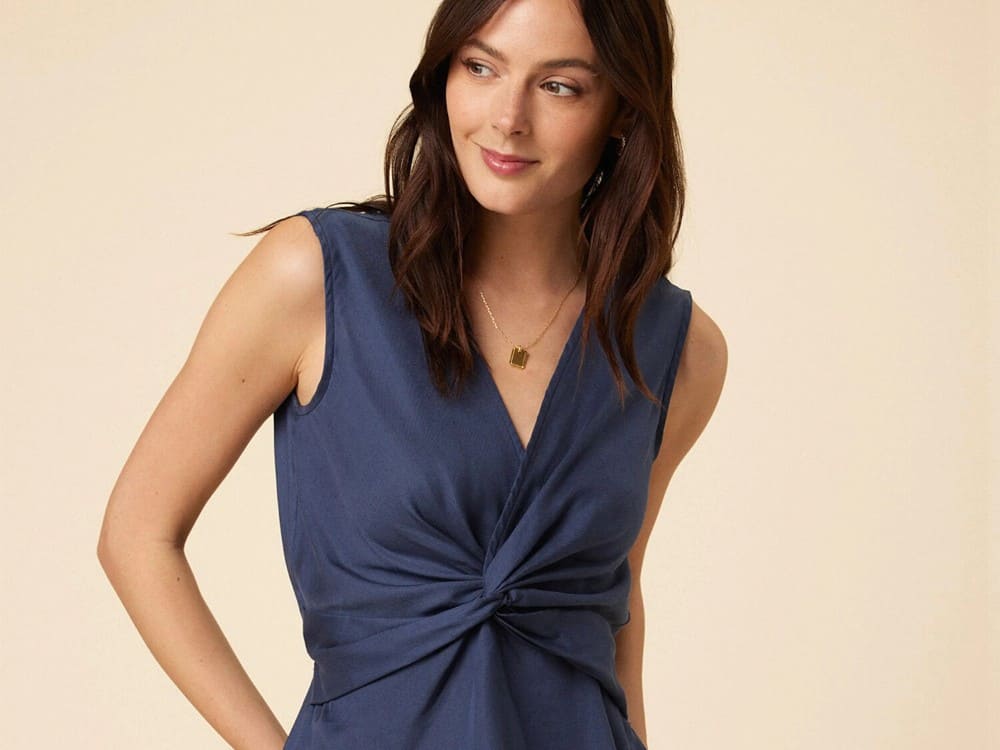
If this has you looking for a lyocell garment, there are a growing number of TENCEL™ clothing brands within the sustainable fashion sphere that have made the switch to tree-derived material and have started incorporating lyocell into their products.
Companies like Amour Vert and Patagonia source TENCEL™ lyocell, as does Allbirds for use in everything from sustainable sneakers to ethical boxers.
Boody specializes in bamboo lyocell. While not made by Lenzing, it is also created through a closed-loop production process.
Chances are, if you’re on the hunt for some sustainable lingerie or other undergarments, you’ll come across several other brands that love lyocell as much as we do.
Did you know we Have a Newsletter?
We cover the latest in sustainable living, fashion, zero waste, beauty, travel, finance and more…
Final Thoughts On Lyocell Fabric Characteristics
Lyocell is a fabric that has taken the sustainable fashion world by storm—and for good reason.
Not only is it durable and comfy, but it’s also one of the most sustainable semi-synthetic fabrics out there. It’s made using natural materials and doesn’t require the full gamut of toxic chemicals to produce.
All in all, we are pro lyocell.
However, like with anything that claims to be “eco-friendly” these days, it’s important to look beyond brand claims.
Some companies are quick to use the latest sustainability trend to score some less-than-legit eco-points.
As mentioned, there are several trusted brands who only use Lenzing’s lyocell TENCEL™ brand, or transparently share their sustainable sourcing practices with buyers.
With all these new-fangled fabrics popping up (seaweed fabric and fish leather, anyone?) it can make learning how to read clothing labels difficult.
Have a friend who would appreciate a little fashion education?
Help us spread the word on the benefits of lyocell (and which lyocell to look out for) by sharing this article with them.
Pin these:
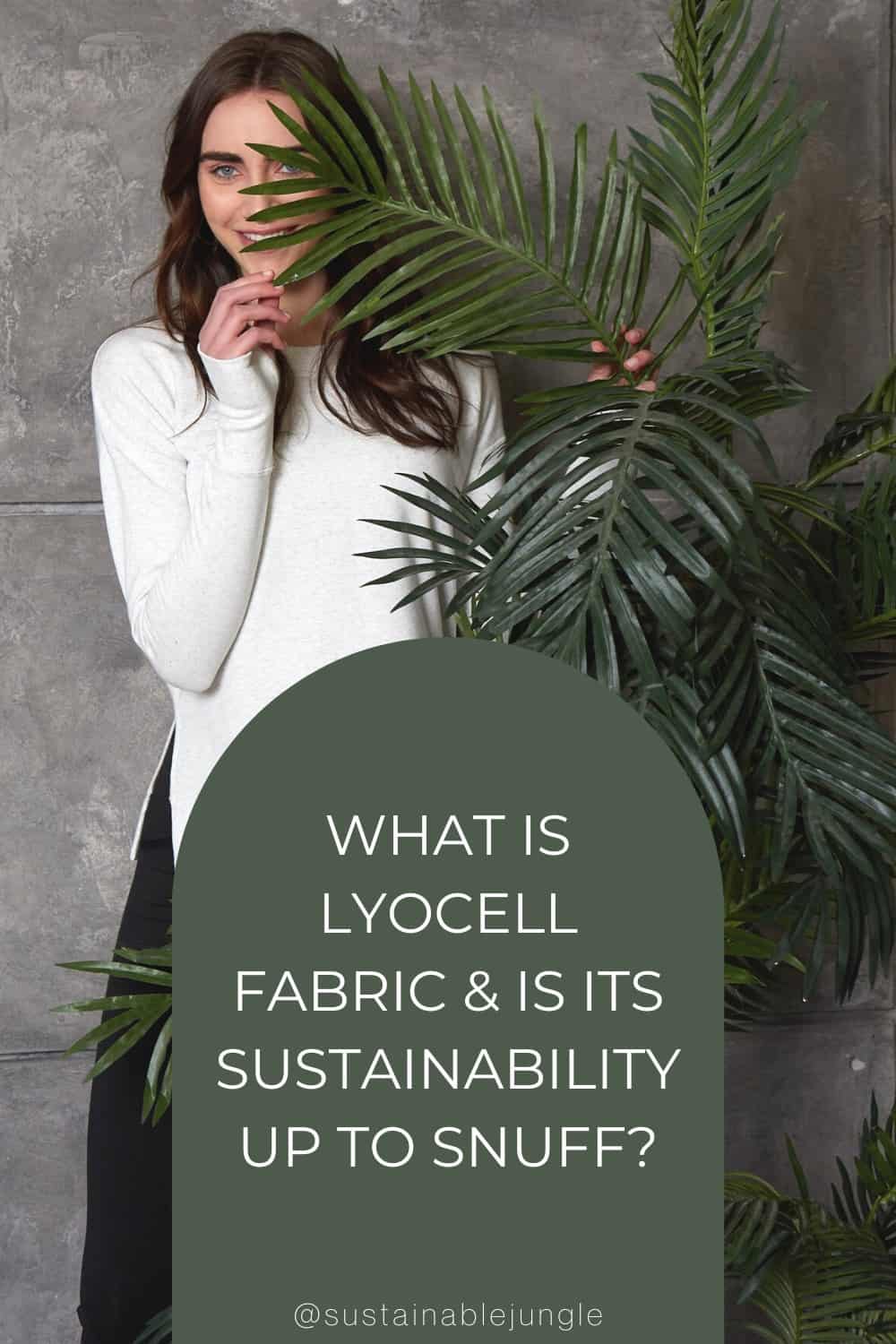
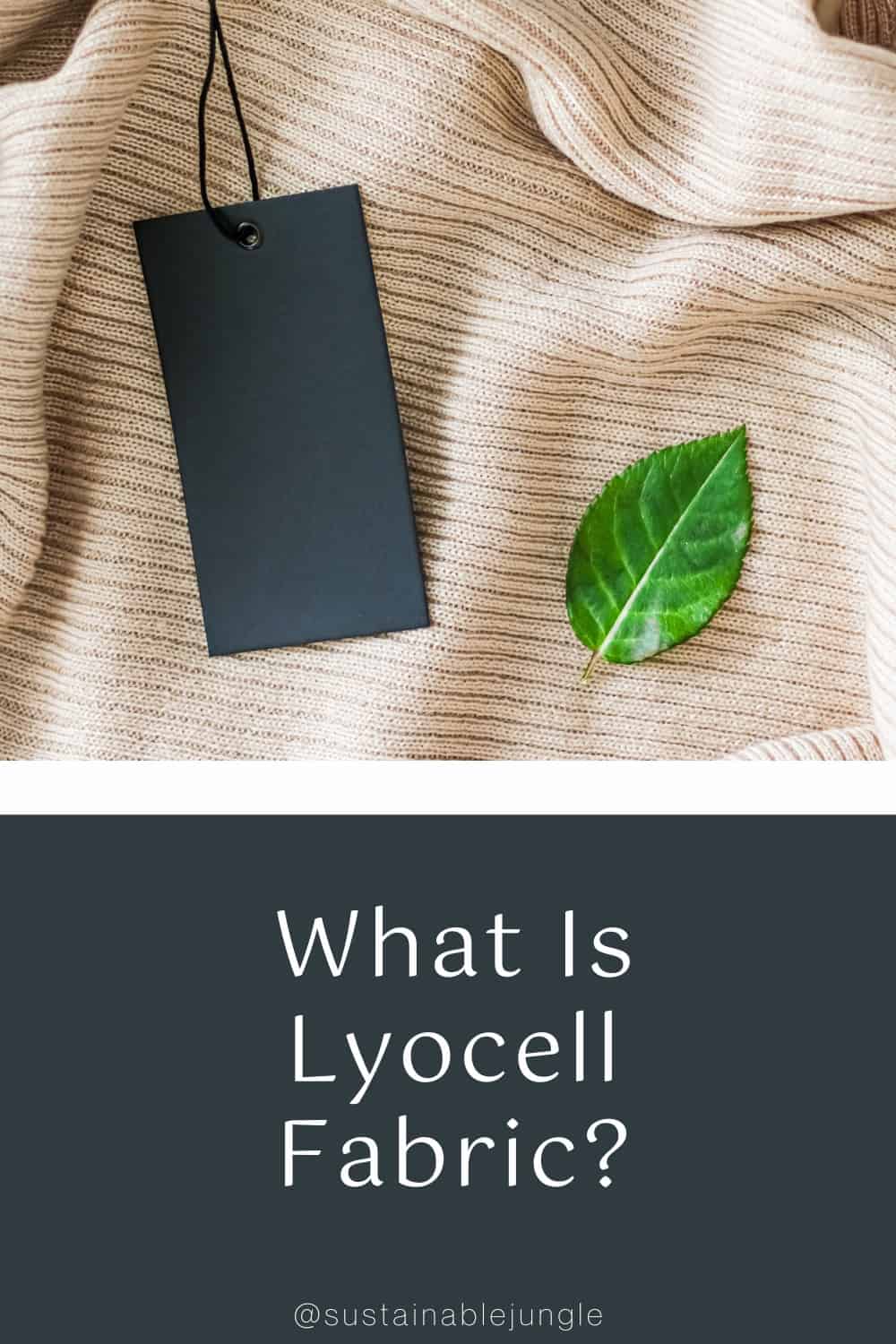

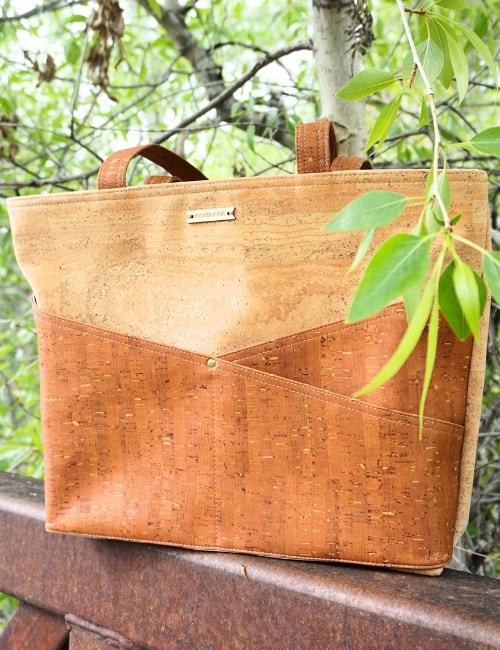
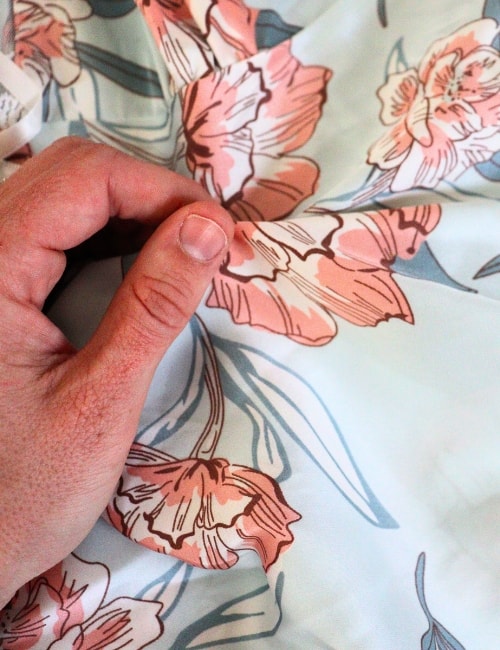
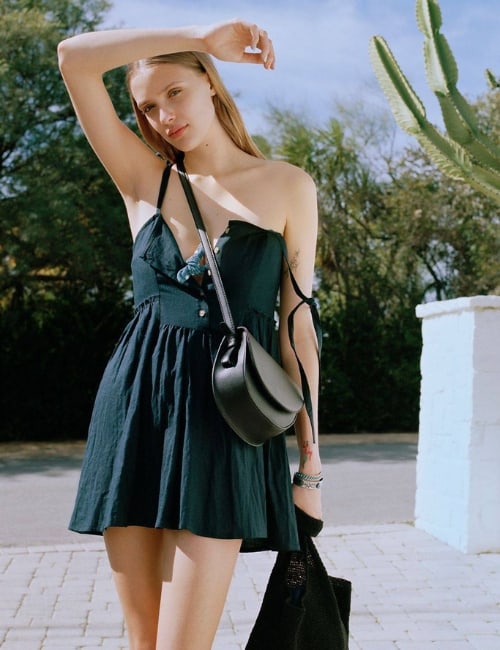
Thank you for your information, makes the topic very detailed. However, I would like to know more about how wrinkle, wrinkle-free the frabric would be. Please including this research and provide more in this area.Nowadays, spending time and effort to get the clothings well-press is such a huge challenge in our daily lives. Next time you write about the material, I really appriciate your effort.
What about the rain forests being decimated to create youre sustainable fibers?
Good day. I’m living in South africa on a farm. I want to make my own Lyocell fabric at home
Do you think that it will be possible?
Hi Amanda, sounds like an interesting project. We’re certainly not the experts in the practical production of lyocell but my understanding is you would need a fairly sophisticated setup to create lyocell in an environmentally friendly way (i.e. a closed loop set up) which I imagine would be expensive for the machinery. Certainly worth investigating further though! Good luck with the project!
Can this material be dyed with like a “ritz” dye ?
Hi Marie, I’m not sure. Hopefully some other readers can help out with this question!